In “The Art of War,” Chinese general and military strategist Sun Tzu wrote that “every battle is won before it has even begun.” Now 25 centuries later, that counsel is still true. It’s why for underdogs, a challenger brand strategy is so crucial for success. Challenger brands understand they aren’t like other brands. Their success doesn’t come from taking the playbook of the category leader and trying to run it better, or cleaner. Challenger brands are driven by very specific points of difference and focus. And as such, they require an equally specific challenger brand strategy. One grounded in the principles of challenger branding and doing things differently.
As the country’s leading challenger brand advertising agency, LOOMIS is well versed in challenger brand strategy and the advantages it can provide. Underdogs have to start with a sound brand strategy because they’re not for everyone. Even if they wanted to reach everyone, they simply don’t have the resources. Successful challenger brands know who they are for and who they are not for. And their challenger brand strategy reflects that. Challenger brands understand who they are, what they are the best at, where they stand in the market, and how ready they are to go to battle. A sound brand strategy for underdogs reflects all of those things. Challenger brands know that in service of building their lighthouse identity, they have to sacrifice something in order to be big somewhere. That doesn’t happen without first starting with a focused challenger brand strategy.
STARTING WITH THE FOUR AGENDAS
One of the reasons LOOMIS understands what it takes to research, plan, and execute a challenger brand strategy well is that we, ourselves, are a challenger brand. We understand the challenger brand mindset because it’s the one we take into battle every day. While it may go without saying, there is a huge difference between the mindset of an underdog and a brand that leads the category. Understanding that is the first step toward winning.
At their core, successful challenger brands each have a central point of view. A brand bedrock. The brand truth on which everything the brand does is based. They also have a “Lighthouse Identity” they’ve wrapped themselves around. A beacon powered by an inarguable truth about the brand. What matters for successful challengers is that what they do to project that point of view is congruent with who they say they are. For brands fighting uphill, walking the walk, and talking the talk is imperative as there’s no room for a lack of authenticity. A strong challenger brand strategy helps ensure there is a plan to keep that corporate congruence on track.
In his book, “Eating The Big Fish,” challenger branding forefather Adam Morgan lists what he calls “the four key agendas” that challenger brands use to spearhead their challenge into the market and express their Lighthouse Identity to consumers. The agendas include:
- EASE AND CONVENIENCE – This agenda centers on how easy it is for consumers to access the brand and how easy it is to use and navigate when they do. Think Amazon and Google.
- PRODUCT – This agenda centers on the different dimensions of the product experience. For a while the mindset shifted from focusing on product superiority in exchange for more emotional branding, but lately, that has shifted back toward product as hero again. Think Apple and Tesla.
- PARTICIPATIVE – In this agenda, everything is social. Thanks in large part to our online interconnectivity, our trusted sources of authority have moved from public figures, institutions, and experts to more of a peer-based authority model. We used to listen to doctors. Now we check Web MD and follow social media “influencers.”
- SOCIAL AND ENVIRONMENTAL – Increasingly, this is the agenda that views brands through the lens of their societal and environmental impact. As much as we might feel pressure to view everything we do exclusively through these lenses, that would be shortsighted depending on the brand. That said, it’s an agenda we can’t afford to ignore. Think Patagonia, Allbirds, and MUD Jeans.
While brands may start in a single agenda, they are not stuck there. As they grow, challenger brands expand their footprint into another, or every other, agenda. That’s why a challenger brand strategy has to be constantly evaluated. It’s a living, breathing thing that has to evolve with the brand. In essence, the four agendas represent a strategic map that challenger brands can use to translate and direct their point of view. “Each of these [agendas] can be amplified and promoted through a variety of activation and media channels,” Morgan noted. “These [agendas] are what help us understand where the key opportunities lie for our creation of Thought Leadership, how we’re going to use our Symbols of Re-evaluation, and where we need to Sacrifice and Overcommit.”
BECOMING A THOUGHT LEADER
For challenger brands, thought leadership is imperative and it doesn’t happen without a purposeful challenger brand strategy. In any category, there are two leaders. The first is the Market Leader – usually the biggest, the richest, the brand with the largest market share. The second is the Thought Leader – the brand making waves. The one everyone is talking about. The one grabbing all the attention. Challenger brands need acts of leadership that signal major breaks with convention. Demonstrative acts that command attention from the consumer. But that’s why it’s imperative that what challengers do and say is congruent. If not, in the blink of an eye, a brand that doesn’t deliver becomes “the brand that cried wolf” and consumers cease to pay attention to anything the brand does. On the flip side of that, challenger brands that consistently deliver in authentic ways often punch above their weight in ways that simply cannot be ignored.
Look at the way Dove has taken ownership of the beauty category. Where Dove’s former “99.4 percent pure” campaign used to refer to its bar soap, today it refers as much to the extraordinarily diverse community of women who patronize the brand. Where once Dove products were used to add beauty to its customers, today, Dove simply helps illuminate the internal beauty that’s central to the soul of every woman regardless of age, size, origin, or ethnicity. How did they do that? By calling out the superficial beauty industry they were once a part of in exchange for the very real beauty every woman can claim. From their videos exposing Hollywood’s superficial beauty techniques and women’s self-critical views of their own beauty, to new products that encourage “pro-aging,” everything Dove does now is congruent with their lighthouse identity centered around true beauty. The brand is demonstrative. It’s authentic. And that’s why it resonates with consumers. But that all starts with an engaging challenger brand strategy.
Becoming a thought leader is the difference between impact and awareness. It’s the difference between capturing a consumer’s imagination and simply communicating a message. A challenger brand strategy is the blueprint that shows the underdog how and where they can impact consumers using genuine consumer insights for leverage. Adam Morgan calls is breaking convention. We call it disruption.
STRATEGIC MAYHEM
In the early 80s, Apple was the definitive challenger brand. Compared to IBM, Apple’s resources, staff, and market share were miniscule. The country had not yet embraced the necessity of personal computers and while beloved by many, the brand lacked the frenzied cult following that would eventually come with the iPod, iPhone, and iPad. Personal computing was very different from the room-sized mainframe computers dominated by IBM and people didn’t yet understand the world a computer on your desk could open. That all changed on January 22, 1984, when Apple detonated an unexpected branding bomb during Super Bowl 18 with shockwaves so big you can still feel them today.
Apple’s Macintosh computer was a brand-new product in a fairly new category from a heralded but pretty young company. Looking at how advertising had traditionally been done, Steve Jobs and company had every reason to run a commercial showing the product. Explaining its attributes. Promoting its price, or where one could be purchased. Apple did none of those things. Instead, they challenged their agency Chiat/Day to do something different. The result was “1984,” now widely regarded as the most impactful commercial ever created. Directed by legendary director Ridley Scott just two years removed from Blade Runner, “1984” leveraged George Orwell’s dystopian novel of the same name to set the tone for the spot and made the Apple Macintosh the heroic reason why “1984 wouldn’t be like 1984.” Computers were no longer just for crunching large numbers. They were suddenly for learning. For enlightenment. For making sure we always knew more than that government forces that threatened to control us. All informed by a computer commercial that didn’t once show a computer.
GIVING OUR COMPETITORS INSOMNIA
Shortly after the agency’s shift to exclusively focusing on challenger brands, LOOMIS agency CEO Mike Sullivan got a call from the CEO of an underdog mattress company asking if we’d like to handle his advertising account. Due to the U.S. recession the economy was in full seizure and his mattress chain was struggling with traffic. Sales had gone from slow to sluggish across his thirty locations. Retailers across all categories were shifting into survival mode and the CEO was very near panic. With sales trending fast in the wrong direction, the idea of differentiating his brand and driving store traffic had escalated from important to urgent. He needed an idea to turn up the volume, and he needed it quickly.
We knew this wasn’t simply an advertising problem. Besides, the CEO had no more money to spend on media, and his messaging was on par with the rest of the category. Mattresses are always on sale. We knew the brand had to do something to disrupt the market, and it needed to be rooted in a point of difference. But not just any difference. It had to be a difference that customers would find important and engaging, especially given the context of a faltering economy and stingy spending on discretionary products like mattresses.
As part of our research, we sent agency team members on field trips posing as mattress shoppers. They shopped our client, and they shopped his competitors, and they came back with an insight. The answer to our new client’s dilemma lay hidden in operations and his company’s extraordinary commitment to sales process and training.
The mattress CEO was relentless about doing right by customers, and this made him very particular about hiring and training. The company’s extensive sales training far exceeded that of competitors, and the result was a superior customer experience. His salespeople behaved more like knowledgeable consultants than the typical high-pressured hucksters who give the retail mattress category its well-deserved bad rap. And as we did our research, we happened upon a critically important detail that would turn out to be this client’s challenger brand rocket fuel.
Because the chain’s sales practices were famously low-pressure and informative in nature, customers routinely purchased the right mattress for their needs. The CEO surmised that his company’s superior approach to sales was the reason their average ticket exceeded the industry’s. He never gave much thought, however, to the company’s far below average product return rate, which was also a byproduct of sales methods that prioritized customer satisfaction over a fast buck.
In fact, the number of returns for our client’s mattress chain were inconsequential compared to the balance of the category and especially low by comparison with the category leader, which was well known for their hard-closing conquest approach to sales. This was a significant but hidden challenger advantage, and our client hadn’t leveraged it at all. On the contrary, his chain had been following the category norm for mattress returns, which was a particular pain point for customers. The category’s standard 30-day return policies are intentionally and notoriously draconian because, as anyone who has ever shopped for a mattress knows, high-pressure mattress sales practices result in extreme levels of post-purchase dissatisfaction. Making it easy for customers to return the product would devastate operations and sales for most chains in the mattress category. This became the foundation of our challenger brand strategy.
The way the category was zigging in this respect presented the perfect opportunity for our new client to zag. So, our agency made a bold recommendation straight out of the challenger branding playbook. We told the CEO to overhaul his return policy and make it not only easier for customers to return products they were unhappy with, but to give them one full year to sleep on their decision.
A month later, we rolled out an advertising campaign promoting the mattress category’s first and only no-questions-asked, one-year money-back guarantee. It was a revolutionary challenger move that turned category convention on its ear and in so doing, caused sales to spike thirty percent the very first month. That quick success was followed by months on end of year-over-year double-digit increases that climbed as high as fifty percent. Our favorite part of this challenger success story was an attempt by category killer Mattress Firm to match our client’s one-year offer only to yank it back quickly after being swamped with returns. Mattress Firm hadn’t operationalized the consultative sales approach like our client had, so the poor result for them was inevitable.
As Adam Morgan takes great pains to drive home in “Eating the Big Fish,” challengers have to be willing and able to do something competitors can’t or simply won’t do in order to create clear and relevant distinction for their brand. The magic wasn’t in our client’s one-year guarantee. It was in the many hours of training each of the company’s sales associates had to go through before hitting their showroom floors. It was this long-standing focus on selling the right way that made such an audacious guarantee possible at all. Our client had operationalized a sales process that wasn’t easy to detect by competitors and no easier to replicate by any who had.
Intentional or otherwise, the CEO’s focus on sales had created a true brand advantage for his company, and that advantage made the job of advertising easy. Even the best advertising is no substitute for meaningful brand distinction anchored to a real consumer insight. Challengers that understand this and are willing to do what it takes to create a genuine distinction are awfully hard to beat.
But there was a second important lesson buried in our client’s success that has become even more evident to me in the years since we hit that first challenger home run. Our mattress client’s sales process was supported and reinforced by something far more powerful than top-down mandates and training alone. The company’s focus on customer service was an endemic part of the company’s culture from stem to stern. You might even say it was the basis of the company’s culture. As such, it functioned as a reliable guide for the behavior and performance of all the company’s employees, not just the salespeople.
From all sides, the company’s culture served as a virtual feedback loop that held everyone to a higher standard of customer care, which turned out to be uncommon for the mattress category. It was this commitment that created the opportunity to offer customers a significant benefit that no competitor could match. Another more obvious lesson that might be drawn is that great service pays. But the much bigger lesson is that for companies counting on the performance of people, culture is inextricably linked to brand performance in ways that aren’t always obvious at first glance.
A good challenger brand strategy always lays the foundation for capturing the imagination. It paves the way for exceptional creative work and inspired media plans. For making an emotional connection. For engaging consumers in ways they weren’t expecting. If challenger brands have any hope of disrupting the status quo, their efforts have to be strategic. At LOOMIS, we help underdogs win. And that all begins with an inspired challenger brand strategy. We help our clients better understand the absolute truths that power their brands. We help them find the weak spots in their category leader’s armor. We create smart, engaging, emotional, memorable work that sells tickets, raises revenue, and puts butts in seats. Then, we get to work and start the process all over again.




